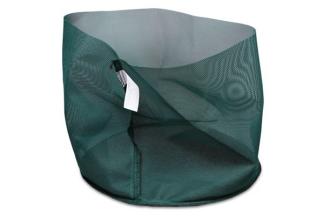Wholesale RootMaker Knit Bag
A poor root system and lack of branching at the root/stem junction of a tree may mean that up to 90% of the root system is left behind at the time of field harvest. This could prove detrimental to the tree after transplanting. The in-ground RootMaker® Knit Bag (used in the liner stage) contains precise, uniformed holes that allow small roots to extend through the fabric but are unable to expand, causing a constriction that leads to root branching and an accumulation of plant energy. With 32 openings in an area the size of a dime, when a root tip contacts the knit fabric grow bag, the tip extends through to the surrounding soil, but as soon as it increases only slightly in diameter, it is girdled or constricted. It is this constriction of the roots at this very small size that provides the growth and root branching benefits of root constriction.
BENEFITS OF FIELD GROWING IN ROOTMAKER® KNIT BAGS
- Do not blow over
- Do not suffer root death from temperature extremes
- Develop more stem caliper
- Develop superior root branching
RootMaker® Knit Bag Use
When planted in field soil, at least one inch of the knit fabric bag should remain above the soil line. Water management is less complicated in the field and the root system is protected from temperature extremes in the RootMaker® Knit Bag. At the time of harvesting, the fabric is removed, displaying a great majority of the root system intact, well-branched, and equipped to establish into the surrounding soil horizontally rather than just downward once installed in a landscape.The RootMaker® Knit Bag is specifically designed for in-ground production.


